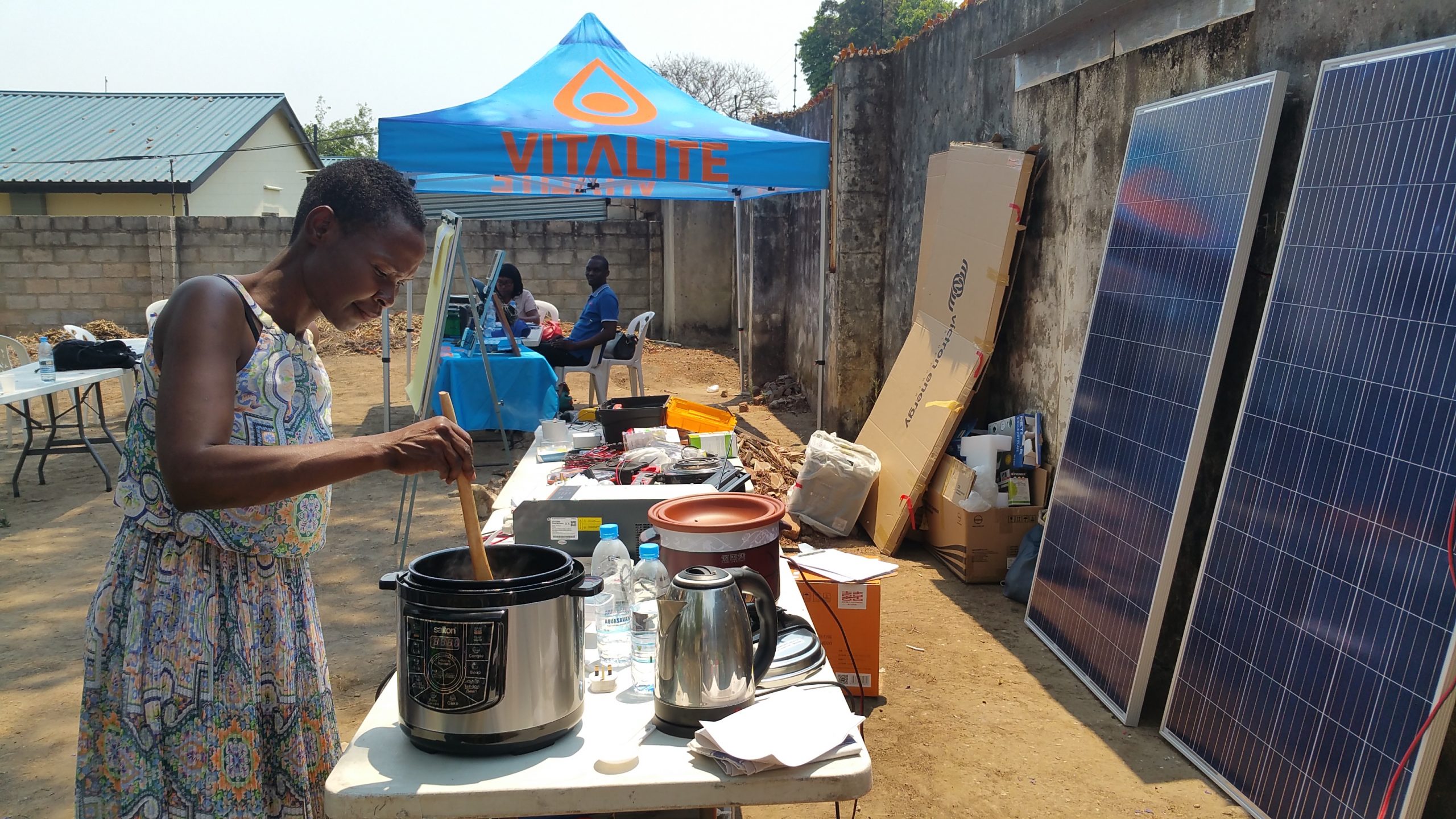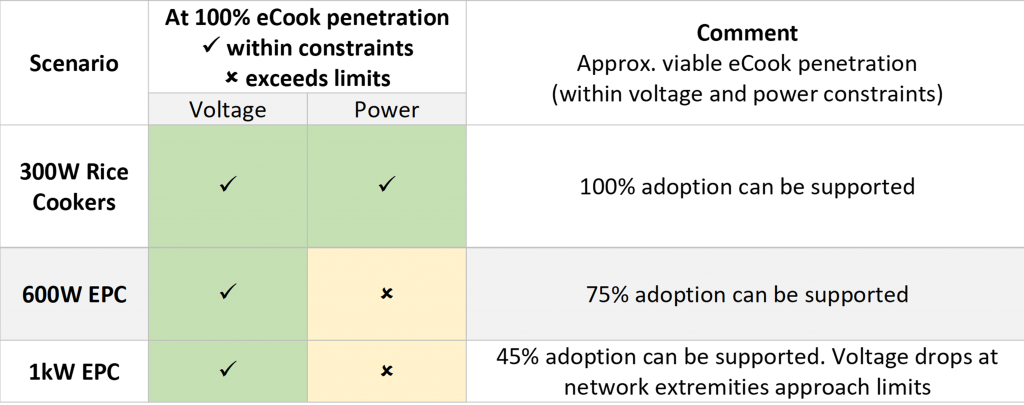
- Date
- 28th October 2020
- Categories
By Dr. Bartosz Soltowski, University of Strathclyde.
By establishing models for Low Voltage (LV) and microgrid networks, studies presenting their ability to support the connection of electric cooking demand have been conducted. These models are summarised as below:
The outcomes of the studies illustrate three of the principal technical challenges associated with the adoption of electric cooking on existing networks in sub-Saharan Africa (SSA): load flows, voltage profile distributions and transformer/power inverter requirements.
The models can be readjusted according to users’ requirements and can thus be used for further analysis in the future. As such, individual investigations presenting the performance of each LV/microgrid network after adoption of electric cooking (eCook) demand can be validated independently using existing OpenDSS scripts for LV/microgrid networks (see Figure 1).

LV Networks and eCook Demand
The outcomes of studies conducted for ‘typical’ networks in SSA indicate that some networks in can already serve a high penetration of electric cooking loads, mainly in locations where they have been overdesigned. The report also reveals that for LV systems, the first issues that can potentially occur while reaching high penetration of electric cooking are associated with the lack of installed substation capacity to meet the demand. It is estimated that LV networks under the specification outlined above can serve up to 45% of households equipped with 1kW Electric Pressure Cookers (EPCs), 75% with 600W EPCs and 100% with 300W rice cookers without exceeding maximum capacity limits of the transformer (see Figure 2).


Analysis of the Power Distribution System
It was also revealed that 50mm2 Aerial-Bundle Cables (typically installed within LV and microgrid networks in SSA) can support 100% of households using 1kW EPCs. Distribution network thermal limits are not expected to be exceeded whereas maximum voltage drop while serving peak demand should not exceed 5% recommended, as indicated in the Figure 3 presenting voltage profiles along the LV network.

Off-Grid Solar Microgrids supporting eCook Appliances
Off-grid microgrid systems under arrangement presented in the report show limited capacity to support electric cooking demand under design specifications typically used in SSA today. This is primarily due to power inverter, PV arrays and battery banks being sized to serve basic access to electricity for lighting, phone charging, radios and TVs. Such appliances demonstrate substantially lower power and energy requirements than electric cooking devices. Despite these limitations, the report reveals that installed distribution networks can effectively support 100% of households with cooking devices without exceeding maximum network constrains.
This is primarily due to the cables considered by the study being ‘overdesigned’, as presented in the Figure 4 which indicates marginal voltage drops within the microgrid under scenario where all 88 users connected draw 100W at once (after diversity maximum demand assumed by Powergen). This high microgrid distribution capacity potential implies that for constantly falling costs of photovoltaic systems, lithium-ion energy storage devices as well as power inverters, potential for introduction of eCook on off-grid solar microgrids is expected to increase in the coming years. This will however require microgrids to be designed and built under specifications which consider larger loads than currently considered.

Results presented in the Impact of New Electric Cooking Appliances on the Low Voltage Distribution Network and Off-Grid Solar Microgrids report are based on estimated demand profiles for electric cooking. Future work will involve integration of existing network models with demand profiles developed by MECS to verify how cooking diversity, cyclic operation of EPCs as well as types of cooking appliances can impact exiting grid infrastructure. In addition, the comparative costs and performance of solutions to the identified challenges will be investigated, including considering conventional upgrades and Active Network and Demand Side Management.